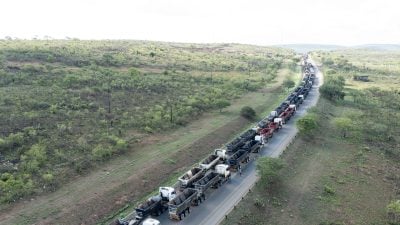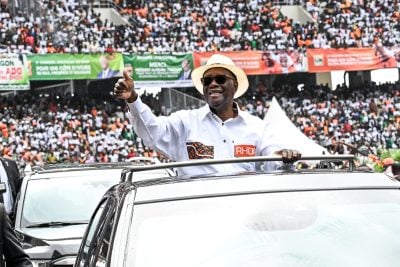This article was produced with the support of AUDA NEPAD
The continent faces a triple economic crisis – soaring trade deficits, unsustainable debt, and volatile currencies – all exacerbated by rising protectionism and policy uncertainty. Yet within this salient challenge lies an unprecedented opportunity to redefine Africa’s role in the global economy. The time is ripe for African nations to seize this moment and shape their economic destiny with purpose and foresight.
The crisis: protectionism and its toll
The United States’ recent decision to impose tariffs on imports from several African countries, including over 40% on imports from Lesotho, Madagascar, and Mauritius, has sent shockwaves across the continent. These measures effectively nullify the tariff waivers previously granted under the African Growth and Opportunity Act (AGOA), a trade law that provides eligible African countries with duty-free access to the US market. AGOA has been a vital lifeline for many African economies, boosting exports and fostering economic growth, and the new tariffs threaten to undermine these gains.
In 2024, exports supported by AGOA totalled approximately $8.4bn. Although AGOA exports accounted for only 1.1% of the total exports of participating countries, some nations – such as Lesotho, where AGOA goods comprise 17% of exports, and to a lesser extent Madagascar (7.2%) and Nigeria (6.2%) – are heavily dependent on this trade scheme. The recent imposition of tariffs signals a troubling shift that threatens to reverse the progress made over the past two decades under this trade pact, risking regional economic stability and growth.
Beyond the direct effects, the broader impacts of protectionism and policy uncertainty on Official Development Assistance (ODA), investment flows and the overall global economy are even starker. Global growth is projected to drop to 2.8% in 2025 and 3% in 2026 – down from pre-tariff projections of 3.3% for both years. Sub-Saharan Africa’s growth projections for the year 2025 have also witnessed a downward revision of 0.4 percentage points, according to the IMF Regional Economic Outlook 2025.
Commodity prices, particularly for crude oil, are set to decline by about 12% as weakening global growth weighs on demand. Between 2 April and 8 April the price of Brent crude oil declined by a little more than $12 per barrel – the 11th-worst four-day price performance since 1990. For the continent, these developments signal slower growth, shrinking export revenues, declining reserves, fiscal contraction, tighter financing conditions, and ultimately, heightened debt vulnerabilities.
Currently, 24 African countries are either in overall debt distress or at high risk of overall debt distress. Africa’s annual trade deficit widened by 41% to $66.6bn in 2023, according to Afreximbank (AfDB). This haemorrhage of foreign reserves forces nations to borrow in hard currencies, deepening debt vulnerabilities.
The continent’s heavy reliance on export of raw materials – such as unprocessed coffee, which accounts for 80% of Ethiopia’s exports – and critical minerals such as cobalt – which makes up approximately 60% of the Democratic Republic of Congo’s export revenue – leaves African economies particularly vulnerable to volatile commodity prices. This dependence often leads to currency devaluations and rising inflation, stalling economic progress and amplifying poverty across the region.
The AfCFTA: a path to resilience
Amid these headwinds, the African Continental Free Trade Area (AfCFTA) emerges as the continent’s most potent tool for self-reliance. While intra-African trade languishes at just 15% to 18% of total trade – far below the 60% in Asia and 70% in Europe – its composition reveals untapped potential.
Countries like South Africa, Egypt, and Morocco are already leading the way, with over 50% of their manufactured goods destined for regional markets. Sectors such as automobiles, processed foods and pharmaceuticals are driving this growth, proving that Africa can industrialise by leveraging its own demand. The lesson is clear: regional integration is not just an ideal, it’s an economic imperative that can unlock sustainable growth and reduce vulnerability to global shocks.
Turning threats into opportunity
The US-China trade war offers a cautionary tale – and a blueprint for the continent. During the 2018 trade war, countries such as Vietnam and Mexico capitalised on the disruption by positioning themselves as alternative manufacturing hubs. Africa, with its vast labour force and expanding consumer market, can replicate this success – but only if it acts swiftly.
Industrial corridors, such as Nigeria’s Lekki Free Trade Zone and Ethiopia’s Special Economic Zones, are critical to attracting firms displaced by protectionism.
Africa already supplies 30% of the world’s critical minerals, including cobalt and lithium. Yet, it captures only a small share of their final value. A joint Africa-US beneficiation pact could change that. Processing resources locally would create jobs, build industries, and keep wealth within the continent.
Policy levers for change
To harness this momentum, African governments must implement four key strategies with the development of the African Union Development Fund as a key driver of the changes.
Africa stands at a crucial turning point in its development financing landscape. Leaders recently gathered in Luanda, Angola, to push forward the establishment of the African Union Development Fund (AUDF). Chaired by Angolan President João Manuel Gonçalves Lourenço, this high-level meeting brought together key stakeholders – including the African Union Commission (AUC), AUDA-NEPAD, and the Alliance of African Multilateral Financial Institutions (AAMFI). All committed to a singular vision: creating a dedicated, African-led mechanism to fund the continent’s transformative Agenda 2063.
The AUDF is set to bridge critical financial gaps, ensuring that Africa no longer relies solely on external sources to drive essential sectors such as infrastructure, energy, agriculture, health, and industrialisation. The meeting reinforced an urgent reality – Africa must control its own developmental trajectory through sustainable, sovereign financing.
What makes the AUDF distinctive is its collaborative nature – designed not as a rival to existing financing institutions, but as a unifying force to amplify them. By consolidating Africa’s financial architecture into a cohesive platform, the AUDF aims to unlock large-scale, results-driven development.
First, domestic resource mobilisation is non-negotiable. Tax exemptions for multinational corporations result in an estimated $30bn to $40bn in lost revenue annually across Africa. Digitalising tax systems and deploying AI to detect fraud could plug these leaks.
Second, corruption must be tackled head-on. Publishing performance rankings and accountability scores of public agencies, as Kenya has done with its procurement authority, can shame laggards into reform. Across Africa, expanding such measures can boost investor confidence and improve service delivery.
Third, regional procurement should be scaled up and standardised. During the pandemic Africa pooled demand for vaccines, slashing costs. The same approach can be applied to essentials like fertilisers and pharmaceuticals.
Finally, trade policy must serve Africa first. The continent spends $50bn annually importing food that it could produce itself, according to the AfDB. Redirecting this demand inward would shield economies from global shocks, strengthen resilience, create millions of jobs and reduce Africa’s dependence on volatile global markets.
The road ahead
Africa stands at a crossroads: it can remain a bystander or boldly carve its own path. The AfCFTA provides a powerful framework, but implementation is lagging. Non-tariff barriers, inadequate infrastructure, and bureaucratic red tape continue to stifle progress.
As I say at every opportunity, every kilometre of rail that Africa builds should use African steel. Every school uniform should be stitched in African factories. This vision is not protectionism – it’s pragmatism and strategic self-reliance.
With AGOA’s future under threat, Africa’s economic sovereignty hinges on its ability to deepen regional integration, foster innovation, and secure a seat at the global decision-making table. The world is retreating; this is Africa’s moment to lead, to unite, and to build a resilient, self-sufficient continent. The path forward is clear: Africa must act now – this is its time to rise.

 Sign in with Google
Sign in with Google 



